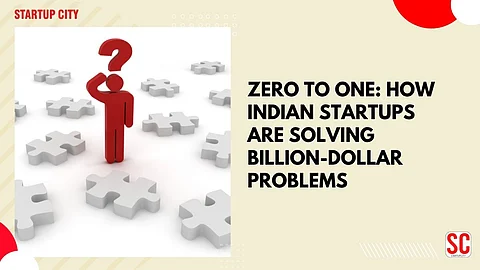

Imagine this — a young founder in Bengaluru with nothing but a laptop and an idea ends up disrupting an industry worth billions. Sounds too good to be true? Well, it’s not. It’s happening all around us. I’ve seen firsthand how Indian startups are moving from zero to one, not just building businesses, but solving billion-dollar problems at scale.
In this article, I’ll walk you through what it really means to go from “zero to one,” why Indian startups are uniquely positioned to solve massive challenges, and how you can ride this wave as a founder, investor, or decision-maker.
Peter Thiel, the legendary entrepreneur and VC, popularized this idea in his book Zero to One. He explained that moving from zero to one means creating something truly new — not just iterating, but innovating.
“Doing what we already know how to do takes the world from 1 to n… But every time we create something new, we go from 0 to 1.” — Peter Thiel
And that’s exactly what Indian entrepreneurs are doing. They're not just launching "me-too" products. They're reinventing finance, education, logistics, health tech, and more.
Here’s the truth: India has no shortage of massive, complex problems — from rural healthcare gaps to inefficient supply chains. But here’s the opportunity: every big problem is a billion-dollar business waiting to be built.
India has over 190 million unbanked adults (World Bank, 2021). Startups like Razorpay, Kaleidofin, and PayNearby are not just offering services—they're building financial ecosystems for underserved markets.
How they’re doing it:
Simplified KYC and microloan models
Embedded finance for rural entrepreneurs
UPI-based innovations and digital wallets
India’s tier-2 and tier-3 cities are starved for quality healthcare. Startups like Practo, Pharmeasy, and HealthPlix are stepping up with AI-powered diagnostics, e-pharmacies, and digital consultations.
“If you solve for Bharat, you solve for a billion.” — Common saying among Indian VCs
Post-COVID, the edtech boom reshaped India. But we’re not just talking about elite coaching. Platforms like LEAD, Teachmint, and Vedantu are now bridging rural classroom gaps with scalable digital-first solutions.
India's farmers face outdated practices, market inefficiencies, and low yields. Startups like DeHaat, Ninjacart, and Fasal are leveraging IoT, AI, and blockchain to transform farm-to-fork efficiency.
Climate change isn't tomorrow's problem—it's today’s. Indian startups like ReNew Power, Ather Energy, and Carbon Masters are designing sustainable energy, EV infrastructure, and carbon footprint tracking tools.
Let me show you why India is not just a market — it’s a launchpad for billion-dollar solutions.
India's diversity and complexity force founders to build robust, scalable, and cost-effective solutions from day one.
Over 65% of the population is under 35. That’s a huge innovation engine. Young founders aren’t afraid to challenge norms or break old models.
With 1.2 billion mobile users, India leapfrogged legacy infrastructure — giving startups a direct line to customers through apps, UPI, and vernacular content.
Byju Raveendran started with offline coaching in Kerala. Today, BYJU’S is a multi-billion-dollar global player—proof that solving a local need can lead to global dominance.
They began by serving e-commerce players with last-mile delivery. Now they’re one of India’s biggest logistics unicorns—simplifying a notoriously broken supply chain.
Frustrated by medicine price disparity and fake drugs? So were the founders of 1mg. Today, their digital pharmacy serves millions with transparency and trust.
You’re not alone if you’ve ever stared at a big, messy problem and thought, “Where do I even start?”
Here’s what I’ve learned from covering dozens of startup journeys:
Validate with a niche audience first, then expand. Solve one sharp pain point deeply.
Local language support, offline-first models, and rural partnerships are your superpower.
Sometimes, how you deliver your product is more valuable than the product itself. Just ask Meesho, which cracked social commerce through WhatsApp.
From Startup India to Digital India, there’s serious tailwind support. Align your mission with national priorities.
Let’s not forget the money.
India added over 50 unicorns in just two years (2020–2022). Why? Because solving a problem at Indian scale often leads to global potential.
“India is not just producing startups. It’s producing solutions that the world needs.” — Sequoia India report
If you’re an investor reading this: look beyond SaaS. Look at climate, agri, healthtech, rural tech—these are tomorrow’s IPO stories.
Let me ask you this: Are you solving a real, painful problem? One that affects millions? Are you leveraging India’s scale and chaos to innovate?
Because if you are, you’re not just building a company — you’re making history.
We’re living in a moment where ambition meets opportunity. Indian startups are no longer just copycats — they’re creators, solvers, pioneers. From zero to one, they’re reshaping the world.
So whether you’re a founder, investor, or dreamer — this is your call to action:
Find a billion-dollar problem.
Start solving it.
Don’t wait for perfect. Begin now.